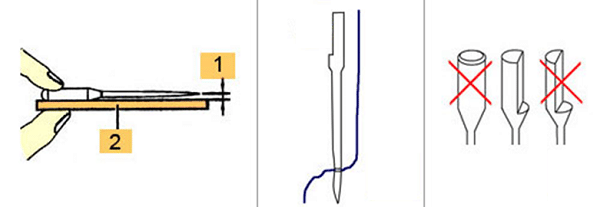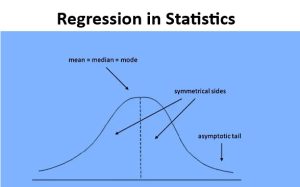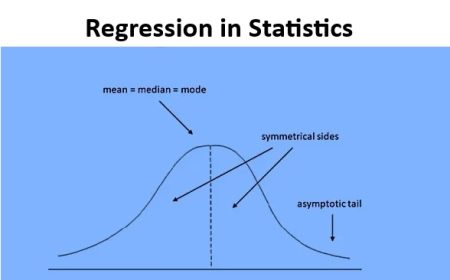The sewing machine is an indispensable unit for cleaning home sewing needles. However, sometimes the machine stops sewing normally. If the thread is broken or entangled, a knock is heard during machine operation. In this case, the sewing machine needs to be repaired or adjusted. It is better to entrust a specialist for difficult repairs that require replacement and subsequent adjustment of details and knots. But most often the car starts to be “jerky”. Misuse , if the rules of adjustment and adjustment specified in the instructions are not followed-in this case, it is possible to repair the sewing machine with your own hands.
Below is the List of Possible Malfunctions in your Sewing machine That you can Repair by Yourself
- Needle problem
- Unstable stitch
- When the thread is torn
- Upper
- floor
- Thread loop
- Poor forward Part
- Drive malfunction
1. Needle problem
Oddly enough, the most important part of the unit is considered the needle. While serving, she makes hundreds of thousands of holes, thick and thin. Over time, the needle becomes dull and the load increases, causing it to bend and break.
If the needle touches a hard surface (for example, when pressed against a device’s metal case or button), the tip can be bent. . At first glance, the needle looks fine, but when I sew, a flat stitch doesn’t work. This is explained by the fact that the thread sticks to the flaws in the tip as it passes through the needle hole. When this happens, it begins to move slowly as excess upper thread flowing out of the stitch forms. For this reason, periodic interruptions occur and loops appear on the line.
Equipment often breaks when users try to sew fabrics that are not intended for household appliances (for example, double distortion in jeans, lightning in leather jackets, etc.).
Therefore, a full repair of this device can be made with a simple replacement of the needle. This part should be taken seriously and changed as often as possible, even if there are no visible flaws. Used needles should not be thrown: a good needle can help if it is broken, but it should be sewn immediately.
Improper needle installation can also cause “staining” of the sewing device. This problem often occurs when repairing singer sewing machines (manual operation) and Chaika 100, etc.

The needle blade should be directed towards the nose of the shuttle (Fig. B). If the device is confusing the thread, remove the needle and make sure it is properly seated.
Sometimes seamstresses obtain and install industrial equipment parts instead of needles for household equipment. It is difficult to confuse furniture and industry (Fig. B). Home needles have a small sawing. When installed, industrial needles may damage the shuttle because some types of this part are slightly longer than usual. Even if the length is normal, the correct gap should still be broken and should be between the nose and needle of the shuttle. “Gap” appears in the resulting line.
Bent needles can also be the culprit for skipping stitches. Looking at Figure (A), you can easily understand how to check the curvature of the part. Since it is difficult to determine the bend of the needle from the side, it must be placed on a piece of glass, if you turn the part and do not bend it, the gap (1) will not change.
Also Read: Top Tech Gadgets 2020
2. Unstable stitch
As mentioned above, you can repair the sewing machine with your own hands with a slight breakdown that does not require replacing parts in the assembly unit.
Proactive cleaning of the device and timely lubrication of moving parts can prevent most problems with the device.
If there are gaps in the line, this problem can be caused by the following factors:
- The mount holding the needle has become loose. To fix the problem, fix the part with a screwdriver, key or pliers (depending on your device model).
- In the course of work, the nose of the shuttle was dull or bent. To check this, use a magnifying glass. If defects are found, replace them with new parts.
- Needle too thick for the fabric. Use the fabric manual and the device manual that details the needle selection criteria.
- For small needles, the thread is too thick. Choose a thickness that matches the size of the eye of the needle.
- The needle is installed incorrectly. Install the parts according to the instructions, usually the sawdust in the flask should be away from the sewing thread.
- Factory wedding needles. Replace it with a new one.
3. When the thread is torn
In some cases, malfunctions that can be solved with your own hands are associated with broken screws (top or bottom), advancement of poor tissue or problems with needles. In other cases, you need to contact the master.
Repairing the sewing machine Chaika 142m, Phoenix or Podolsk with your own hands should begin with cleaning the lubricator of dirt and moving parts.
Uper
You can constantly tear the top thread. Poor quality threads , or generally poorly filled. The charging circuit may be different on different models of devices, so you need to study the instructions and insert the screws correctly accordingly. If you choose the wrong number of screws for the needle, use the manual. When the bobbin case is severe, the upper thread breaks. Spring was pressed. . Slightly loosen the adjusting screw with a screwdriver. Such adjustments are often performed when repairing sewing machines Podolsk and Dragonfly, Brother and others, since the bobbin cases of all models have a similar design. Also, the thread can break due to improper installation of the needle.

Floor
The thread at the bottom of the unit starts from the bobbin (small coil), passes through the bobbin case and ends with the needle hole in the plate. The breakage of the thread may be due to a dense and uneven winding. You also need to check. Correct installation of the bobbin .
The quality of the yarn plays an important role in the proper operation of the machine. If there is a hinge, you need to lock it under the spring and take a break.
Breakage of the lower thread rarely occurs, and such defects are more often found on machines with vertical hooks. If the needle repeatedly deviates from its path, the needle may form in the metal part near the needle. In most cases, to promote the typewriter, when the user drags the hemming material, it bends to “help” the ellipse. Spot the fur , remove it with a fine sandpaper, then lubricate all moving parts of the assembly. After that, you need to sew a small piece of fabric so that the excess lubricant is absorbed.
There are cases when repairing a seagull sewing machine or a Podolsk sewing machine, which detects the wrong position at the point where the thread comes out of the bobbin case. Replacing the “native” cap with a cap made by JANOME will solve the problem. This solves the problem of breaks and also improves the quality of the seams.
Thread loop
Usually, the upper tension of the thread is weak or looping occurs from below due to careless recharging. To avoid this problem, it is necessary to put the legs of the machine in a low position and after that, refer to the instructions, leading the thread at all points of refueling. The plate closes when you lower your foot. Tension regulator .
The thread must be tensioned, so that a noticeable tensile force can be applied to the thread take-up when drawing the thread.
If the thread on the plate is not clamped, it is said to go into the space between the threads where foreign matter must be removed. If cleaning does not help, the regulator must be disassembled. In older-style devices, it is located outside the front panel of the device; in new machine models, when repairing the sewing machine Chaika, the lining of the device must be removed.
Poor forward Part
When the fabric breaks frequently or is difficult to move, the movement of the needle and the moving rod assembly may be misaligned. Since each model of sewing machine may have different settings for the knot, we cannot provide universal instructions for repairing a Brother sewing machine for example. However, if you understand how this node works, you can configure it in any model’s model.
-
- The needle moves simultaneously with the staff to the final lower position.
 The most important thing in tuning is when the tip of the needle meets the notch in the slat. The latter should be slightly lowered compared to the needle plate, but completely (see a bit). At this time, the position of the needle should be so that the tip does not reach the tooth 1.5-2 mm. The position of these two parts relative to each other is the main parameter when setting up the fertilizer plant and machine . In this case, the unit will no longer tear the thread, do not promote or collect the fabric badly. This is possible if the other settings are correct.
The most important thing in tuning is when the tip of the needle meets the notch in the slat. The latter should be slightly lowered compared to the needle plate, but completely (see a bit). At this time, the position of the needle should be so that the tip does not reach the tooth 1.5-2 mm. The position of these two parts relative to each other is the main parameter when setting up the fertilizer plant and machine . In this case, the unit will no longer tear the thread, do not promote or collect the fabric badly. This is possible if the other settings are correct.
- The moment the needle is raised. After reaching the low position, the needle starts to rise and the rake moves forward, preparing for the next cycle and promoting the fabric.
 A stitch is formed at this time (the upper thread is removed from the needle with the help of a hook), and there should be no obstacles for the thread to move forward. Often this occurs simultaneously with the advancing of the fabric, as a result of which excessive tension occurs and the thread breaks. Frequent movement of the fabric will break the needle.
A stitch is formed at this time (the upper thread is removed from the needle with the help of a hook), and there should be no obstacles for the thread to move forward. Often this occurs simultaneously with the advancing of the fabric, as a result of which excessive tension occurs and the thread breaks. Frequent movement of the fabric will break the needle.
- The needle moves simultaneously with the staff to the final lower position.
- The thread is tightened in the stitch. As the rail moves upward toward the plate, the thread feeder pulls the upper thread with a sharp movement. This movement of the thread feeder should occur when the stitch formation has already been completed, so the excess thread will come out.
 The quality of the stitch is affected not only by the tension of the thread, but also by its correct operation. Compensation spring , the ideal state of the shuttle (no roughness and roughness), the tension of the thread below and other parameters. If the rails are not installed correctly, the threads will get tangled off the floor and will easily detach and stretch.
The quality of the stitch is affected not only by the tension of the thread, but also by its correct operation. Compensation spring , the ideal state of the shuttle (no roughness and roughness), the tension of the thread below and other parameters. If the rails are not installed correctly, the threads will get tangled off the floor and will easily detach and stretch. - Fabric promotion. In the final step, the rake begins to advance the fabric over the plate. The stitch length set with the special handle depends on the distance the rake is moved. You should pay attention to the height at which you put your teeth on the plate. Their departure must be larger than their size.
 For thin tissues, it is advisable to lower it in half while simultaneously reducing the clamping force of the foot. You can call the ideal option. Rail replacement On the other hand, smaller teeth (not all sewing machines have such a possibility). Pryamostrochny units can sometimes have 3 types of slats, and accordingly-needle plates. The rake changes simultaneously with the plate of that number
For thin tissues, it is advisable to lower it in half while simultaneously reducing the clamping force of the foot. You can call the ideal option. Rail replacement On the other hand, smaller teeth (not all sewing machines have such a possibility). Pryamostrochny units can sometimes have 3 types of slats, and accordingly-needle plates. The rake changes simultaneously with the plate of that number
Drive malfunction
Some models of sewing machines are equipped with an electric drive, which is designed to rotate the main parts of the mechanism. Electric drives often do not work due to overheating during the operating time of the device. In this case, the motor overheats, the conductor melts and the winding closes. In this case, the repair of the electric sewing machine is not appropriate. It must be completely replaced with a new one.
Also, a sign that the electric motor will soon be cut off is that the device slows down and the smell of burning electrical wiring appears.
Pedal breakdown Sometimes the motor breaks. So you need to disassemble it and examine it carefully to fix the problem. If it is not possible to repair it, you will have to purchase and install a new pedal.
In conclusion, we can say that the sewing machine is a rather complex mechanism. Due to the complex structure there is a large amount of breakdowns, which can only be eliminated by a qualified master. In addition, the correct operation of the sewing machine is influenced by professional tuning of knots, which can not be adjusted with your own hands without special knowledge.




 The most important thing in tuning is when the tip of the needle meets the notch in the slat. The latter should be slightly lowered compared to the needle plate, but completely (see a bit). At this time, the position of the needle should be so that the tip does not reach the tooth 1.5-2 mm. The position of these two parts relative to each other is the main parameter when setting up the fertilizer plant and machine . In this case, the unit will no longer tear the thread, do not promote or collect the fabric badly. This is possible if the other settings are correct.
The most important thing in tuning is when the tip of the needle meets the notch in the slat. The latter should be slightly lowered compared to the needle plate, but completely (see a bit). At this time, the position of the needle should be so that the tip does not reach the tooth 1.5-2 mm. The position of these two parts relative to each other is the main parameter when setting up the fertilizer plant and machine . In this case, the unit will no longer tear the thread, do not promote or collect the fabric badly. This is possible if the other settings are correct.
 A stitch is formed at this time (the upper thread is removed from the needle with the help of a hook), and there should be no obstacles for the thread to move forward. Often this occurs simultaneously with the advancing of the fabric, as a result of which excessive tension occurs and the thread breaks. Frequent movement of the fabric will break the needle.
A stitch is formed at this time (the upper thread is removed from the needle with the help of a hook), and there should be no obstacles for the thread to move forward. Often this occurs simultaneously with the advancing of the fabric, as a result of which excessive tension occurs and the thread breaks. Frequent movement of the fabric will break the needle. The quality of the stitch is affected not only by the tension of the thread, but also by its correct operation. Compensation spring , the ideal state of the shuttle (no roughness and roughness), the tension of the thread below and other parameters. If the rails are not installed correctly, the threads will get tangled off the floor and will easily detach and stretch.
The quality of the stitch is affected not only by the tension of the thread, but also by its correct operation. Compensation spring , the ideal state of the shuttle (no roughness and roughness), the tension of the thread below and other parameters. If the rails are not installed correctly, the threads will get tangled off the floor and will easily detach and stretch. For thin tissues, it is advisable to lower it in half while simultaneously reducing the clamping force of the foot. You can call the ideal option. Rail replacement On the other hand, smaller teeth (not all sewing machines have such a possibility). Pryamostrochny units can sometimes have 3 types of slats, and accordingly-needle plates. The rake changes simultaneously with the plate of that number
For thin tissues, it is advisable to lower it in half while simultaneously reducing the clamping force of the foot. You can call the ideal option. Rail replacement On the other hand, smaller teeth (not all sewing machines have such a possibility). Pryamostrochny units can sometimes have 3 types of slats, and accordingly-needle plates. The rake changes simultaneously with the plate of that number

